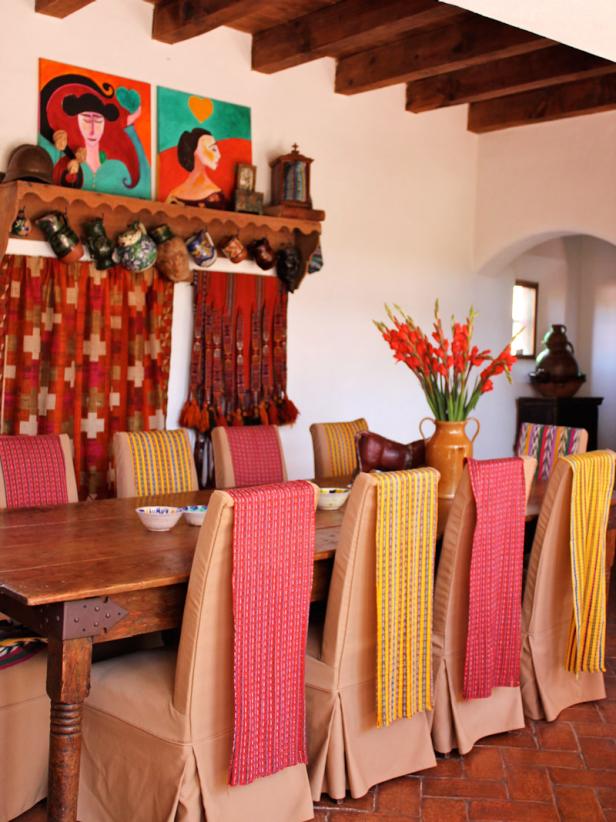
Spanish Architectural Elements This bright yellow bathroom is full of Spanish-inspired design elements from top to bottom. The ceiling includes wooden support beams, or vigas, which put perpendicular to slender strips of wood known as latillas. The carved corbels, derived from Spanish settlers, help the ceiling beams while adding a decorative component. The vibrant Talavera tiles onto the wainscoting draw the eye to the middle of the space. Saltillo tile, introduced to Mexico from Spaniards, is a warm, womanly terra-cotta tile flooring option best suited to warm climates. These components, combined with the vibrant, conservative whirlpool bathtub, make the area a cozy nook in which to unwind. Style by Vintage New Mexico Homes
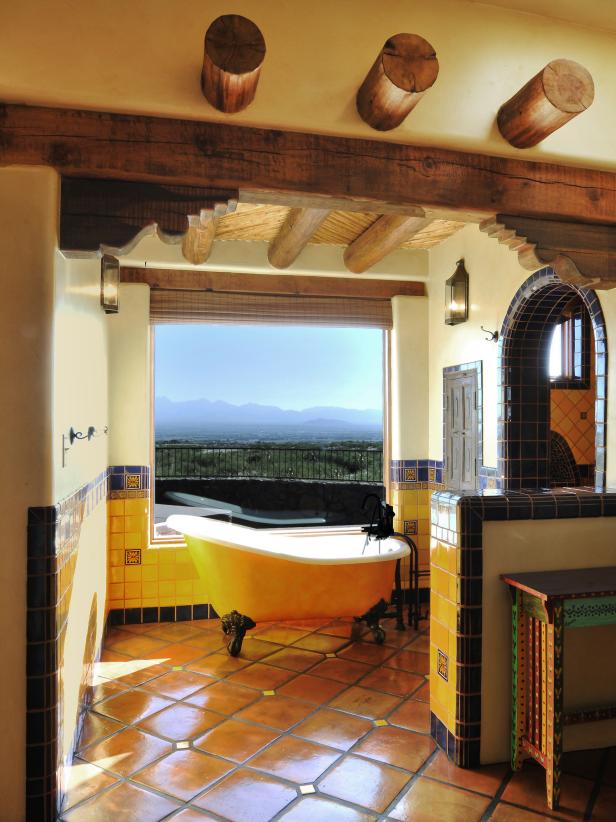
Traditional Mexican Accessories "Inspired by a Spanish matador's Suit of Lights, the vibrant colours of this master bedroom are a joy to wake up," states Carole Meyer. Details such as the custom made mirror cloth pillows and star-shaped recessed lighting give the room a magic touch. The weathered chair in the corner is draped with a huipil, a standard Mexican outfit. The embroideries on the huipil have particular meanings and reflect the cultural identity. The round wicker dining table is covered with an African kente cloth and topped with a classic Mexican saint and silver items from India. Carole placed weathered chests alongside and at the base of the mattress for a rustic look. The dark iron candlestick lamps with red silk shades bring an elegant touch, and the brightly colored headboard looks door arches popular in Spanish architecture. Photography by Carole Meyer
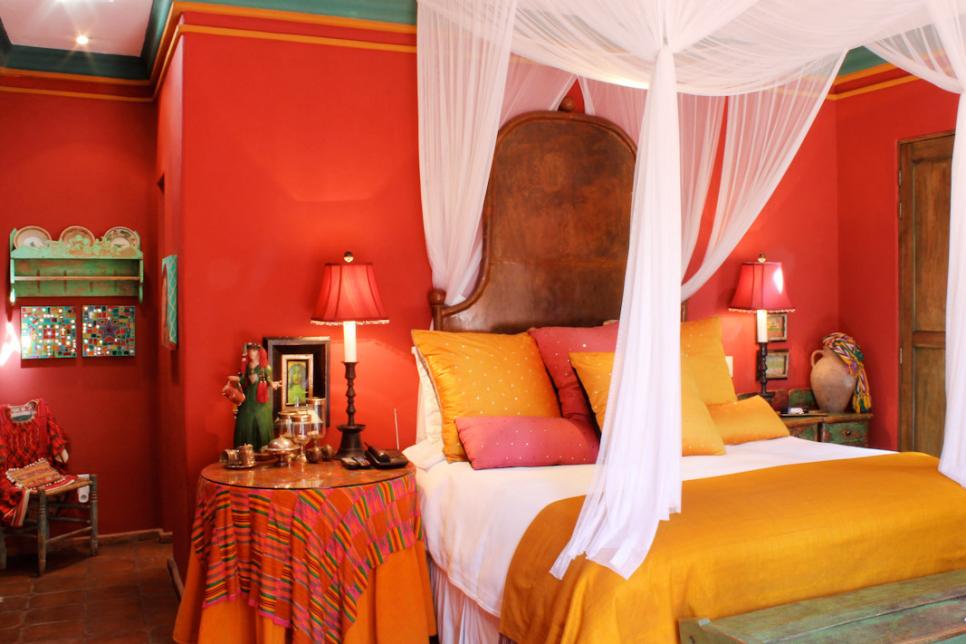
Spanish-Style Colonial Dining Room Designer Catherine Smith of Casa Smith Designs desired to draw the eyes upwards in this contemporary Colonial dining area, so she flipped the ceiling into an art canvas with a painting representing a formal garden. The ceiling beams, previously employed for support, now add a decorative element to your room. The wrought-iron chandelier, imported from Spain, is over 100 years old and adds detail to the space. "The unique details highlight the artist's ability to manipulate iron into a delicate art piece," she says. The rich hue from the draperies is implemented from the dining chair ceiling and upholstery artwork, giving the room a royal look.
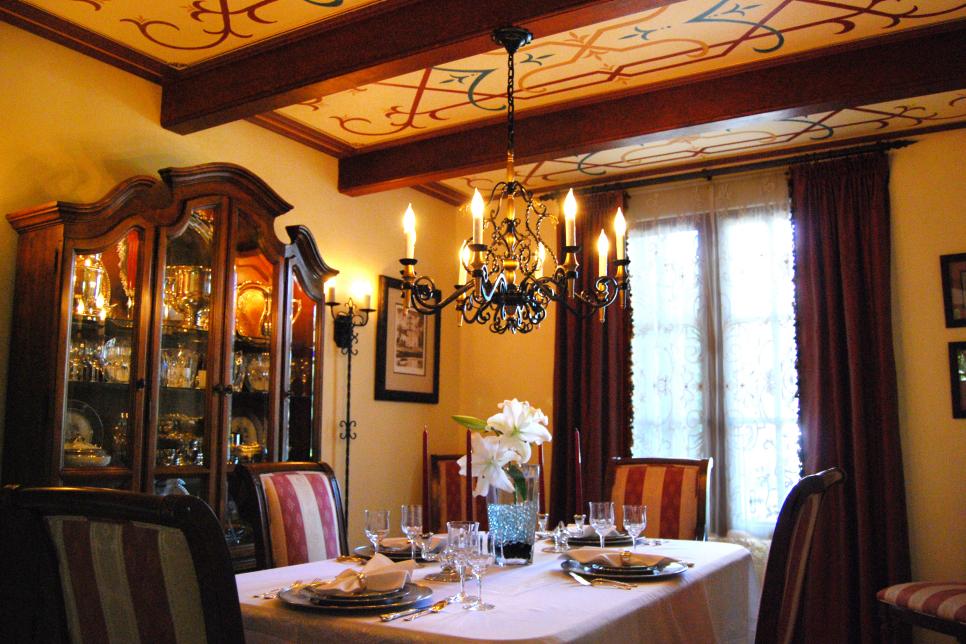
Whimsical Mexican-Style Entry Hall This gold yellow Spanish entrance hall (zaguan) features hand-painted stars on the ceiling and antique doors. Carole Meyer painted the celebrities and art to bring a whimsical touch to the conventional space. She laid a Mexican cloth rug on the floor and put custom-made wall sconces to add culture to the area. "The long Spanish-style seat was traditionally a location in a hacienda in which the hired help could wait to be paid," she states. The mix of whimsy and heritage gives guests a one-of-a-kind welcome and sets the tone for the rest of the house. Photography by Carole Meyer

Vibrant Cultural Colours The bright colours in this Mexican-inspired kitchen signify the vibrant, warm culture of the nation. Emily Severinsen chose a deep orange wall color and carried it through to the pottery, which holds a variety of kitchen utensils. The green tea color on the stove hood and cabinets is a refreshing contrast against the bold, rustic metallic tile backsplash and ethnic art. Natural elements such as the sabino wood kitchen island along with wooden ceiling beams add a nation look, while the black modern stools rekindle the space. The oversized antique mirror makes the kitchen feel larger and more spacious. Photography by Carole Meyer

Pie Safe Entertainment Center This wooden entertainment center contains plenty of storage room for gear. "All these kinds of cupboard doors were typical of those pie safes in the 1800s," says Kiki Suggs of Classic New Mexico Homes. The decorative carved cutouts in the cabinet's doors allowed air to circulate amongst the baked products indoors. The thick adobe walls of the living room are energy efficient since they accumulate heat from the hot sun all day and discharge it to the property's interior for warmth during cold nights. The neutral warm tones of the house along with the decorative wooden corbels complete the Southwestern look.
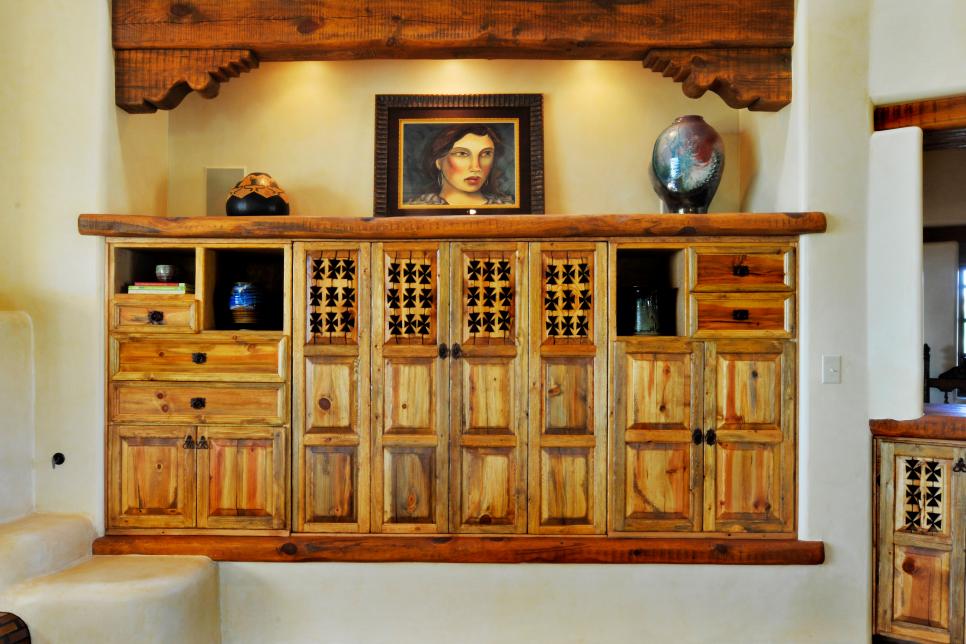
Talavera Tiles Talavera tiles give this toilet an authentic Mexican-style look. Designer Erica Islas of EMI Interior Design picked cobalt blue tiles and complemented them with hand-painted sinks. Cosmetic Talavera tiles dress up the mirror, cabinet hardware and flooring to create an eye-pleasing space. Talavera, a kind of tin-glazed pottery brought to Mexico by the Spanish in the 1st century of the Colonial period, became highly popular in homes because of the availability of fine clays and requirement for tiles from the recently established churches in the region. The curved arch of the mirror represents Moor affects on Spanish structure beginning around A.D. 850. To get a stunning touch, Erica chose a clear glass star-shaped chandelier to add sparkle into the space. Photo by David Young-Wolff Photography
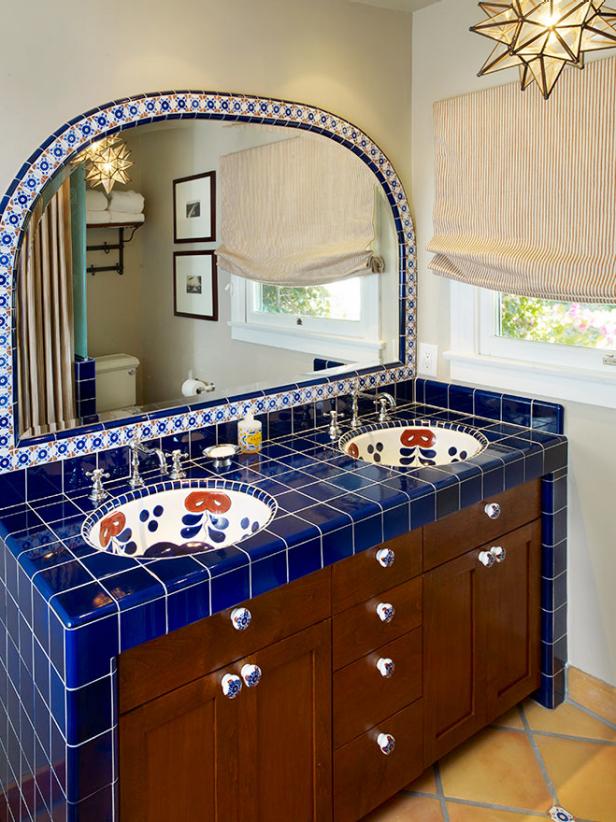
Wrought-Iron Details This Spanish-inspired great area is centered on a hand-carved cantera stone fireplace, which adds elegance to the room. Architectural designer Matt Dougan incorporated wrought-iron detailing to the room through an oversized chandelier and balcony loft railing. Wrought iron was primarily utilized for weapons and utilized to protect doors and windows out of invaders, but it became popular as a decorative material, like in elaborate displays in Spanish cathedrals, beginning in the 16th century. Arches, ceiling beams, corbels and stone elements bring Spanish design to the space, while golden furnishings deliver lavish elegance.
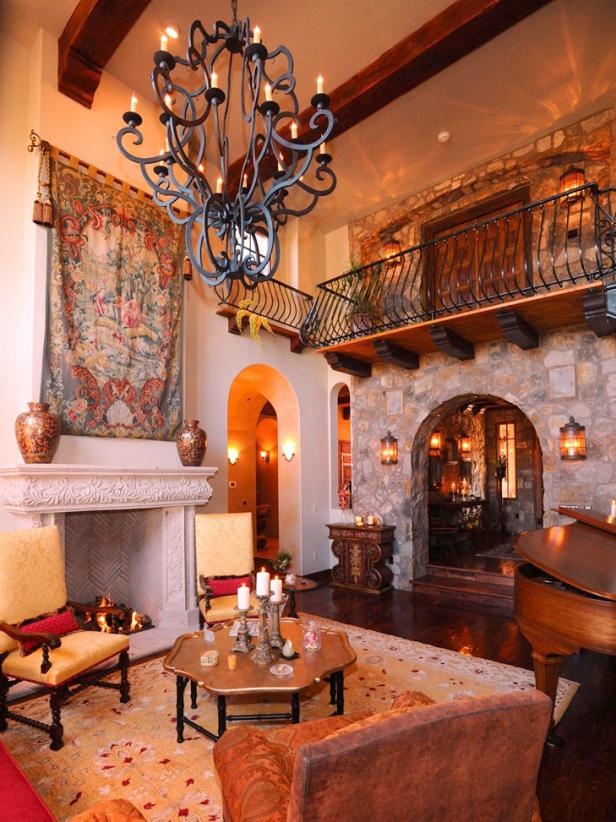
Mexican-Style Divided Doors These split doors are made of sabino timber, based from sabino trees in Mexico used for doors and furniture from the 18th and early 19th centuries. The branch in the doorways was to allow light and air to flow to the house when keeping farm animals out. Carol Latta placed these doorways between her kitchen and terrace to add some Mexican charm and culture to her house. Photography by Carole Meyer

Southwestern Banco This earthy entryway includes a seat, or banco, popular in Pueblo revival houses. Bancos are built-in plastered chairs usually positioned close to a kiva fireplace, a semicircular adobe fireplace at the corner of a room. The seat provides a comfortable place to sit down around the warmth of the fire. Designers Wayne and Kiki Suggs embellished the banco's neutral tone with a patterned pillow and Talavera tiles to get a splash of colour. A number of clay pottery sitting on open shelving provides the room an authentic weathered appearance.
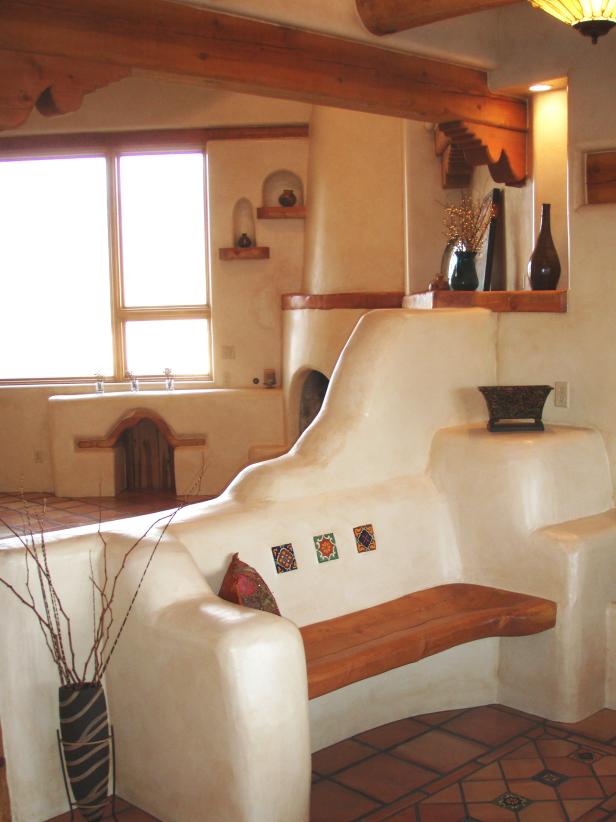
Spanish Colonial Living Room Designer Catherine Smith mixed old with new in this Spanish Colonial-inspired living room. Furniture pieces bring newer elements to the space while elements from the Colonial period take you back in time. Wooden ceiling beams and above mentioned details signify substances utilized during that period of time, and the doorway arches were frequently the only ornamentation inside this kind of easy, informal design. Catherine used a reddish wine-colored velvet couch and an oversized tapestry of a Spanish-style courtyard to add texture, giving the room a stunning appearance.
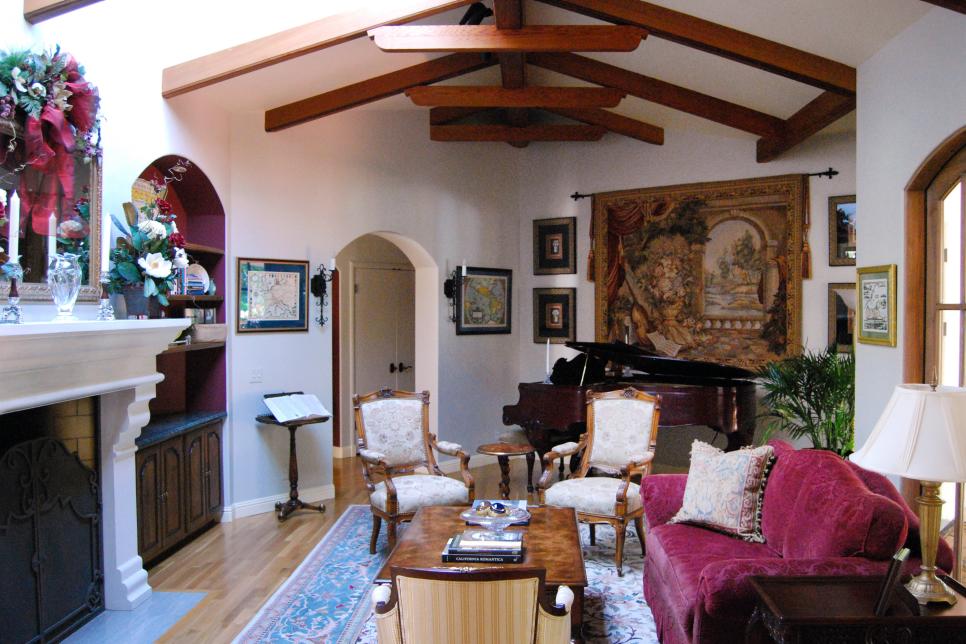
Masculine Southwestern Adobe Living Room Spanish explorers combined their architectural components with Pueblo Indian design starting in the 1500s to create an attractive look known now as Southwestern adobe design, including in this living room. Brick designer Matt Dougan used elements like vigas and latillas to adorn the ceiling, and Old World rugs combined with leather furnishings include a Southwestern charm to the space. Southwestern print furniture, a hand-carved cantera fireplace along with an antler chandelier finish the look. A few subtle floral accessories implement a soft, feminine touch to the masculine space.
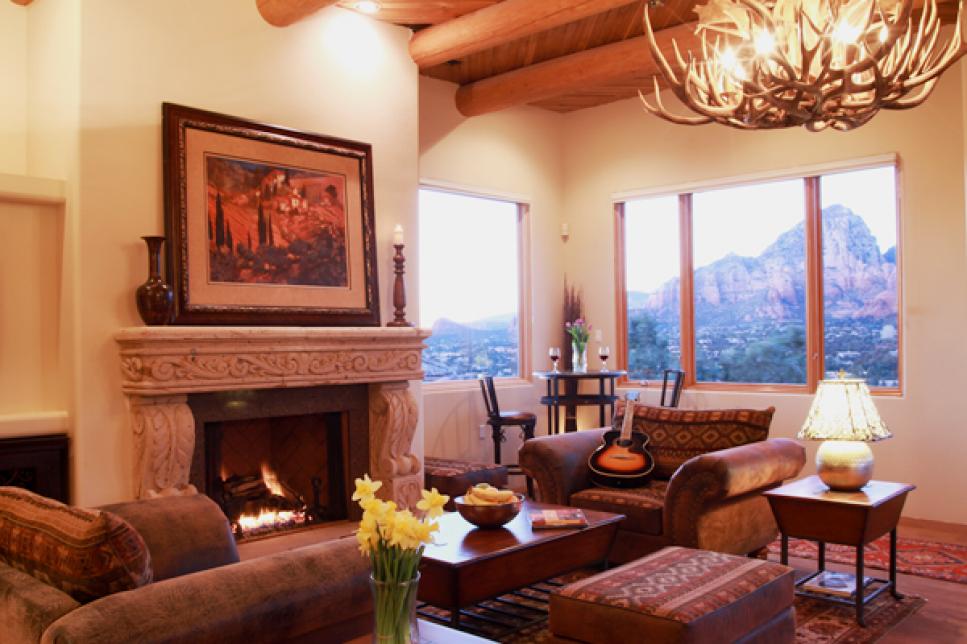
Mexican Country Living Room The glass-front hutch is the focal point of this Mexican-country style living area. The green background from the hutch allows the Spanish-inspired items to pop from the neutral-toned living room. Emily Severinsen mixed bold, Spanish-inspired pillows, artwork and pottery to provide a feeling of country living, while the black contemporary seats and mirror side table add a touch of contemporary style. The assortment of items makes the room feel lived-in and comfy. The wooden coffee table and whitewashed hutch include natural elements into the space. Photography by Carole Meyer
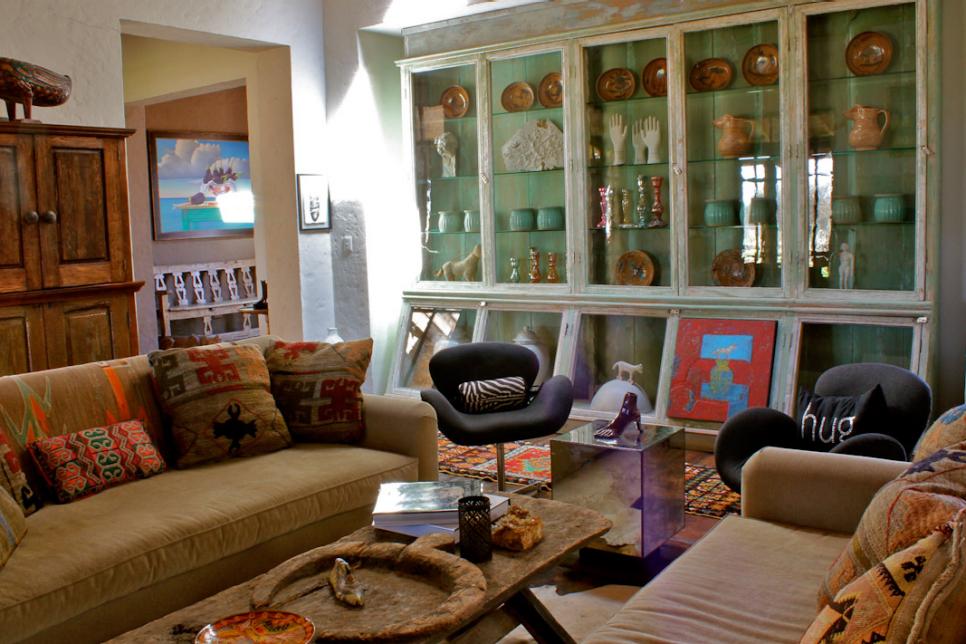
Old World Spanish-Style Entryway The arched doorway and wrought-iron chandelier give this entryway an Old World Spanish appearance. The neutral tones mix in with the outdoor surroundings, along with the tile on the floor and stair risers incorporate Spanish-inspired materials into the house. The staircase climbs above the door, and it is a smart way to create more open space in the home. Layout by Keith Summerour of Summerour & Associates Architects, Inc
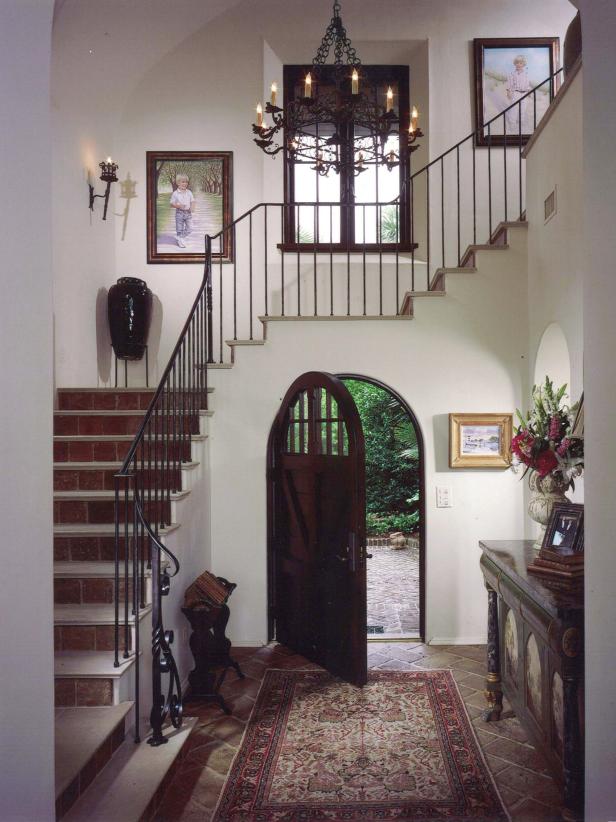
Adobe Shower Designer Steve Appolloni didn't take the standard approach when he designed this toilet made from adobe, a natural material made from clay, sand, water and other organic elements. Adobe originated in the Pueblo Indians, and the Spanish were the first to earn adobe into bricks dating back to the 8th century B.C.. The material is now popular in New Mexico along with other foreclosed homes. The curved form of the shower walls permits for a bigger area and the glass-block wall emits natural lighting while giving privacy.
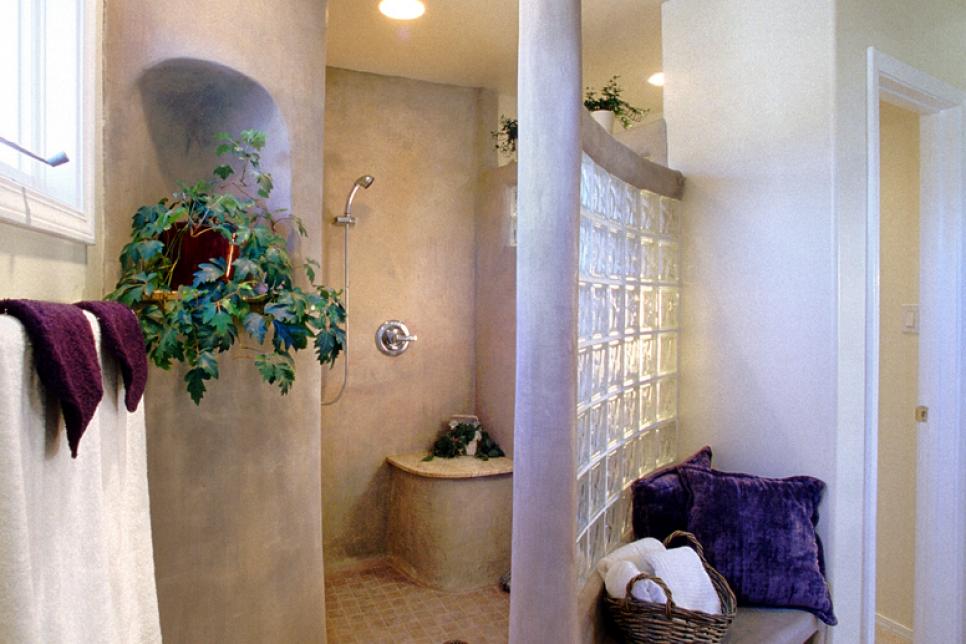
No comments:
Post a Comment